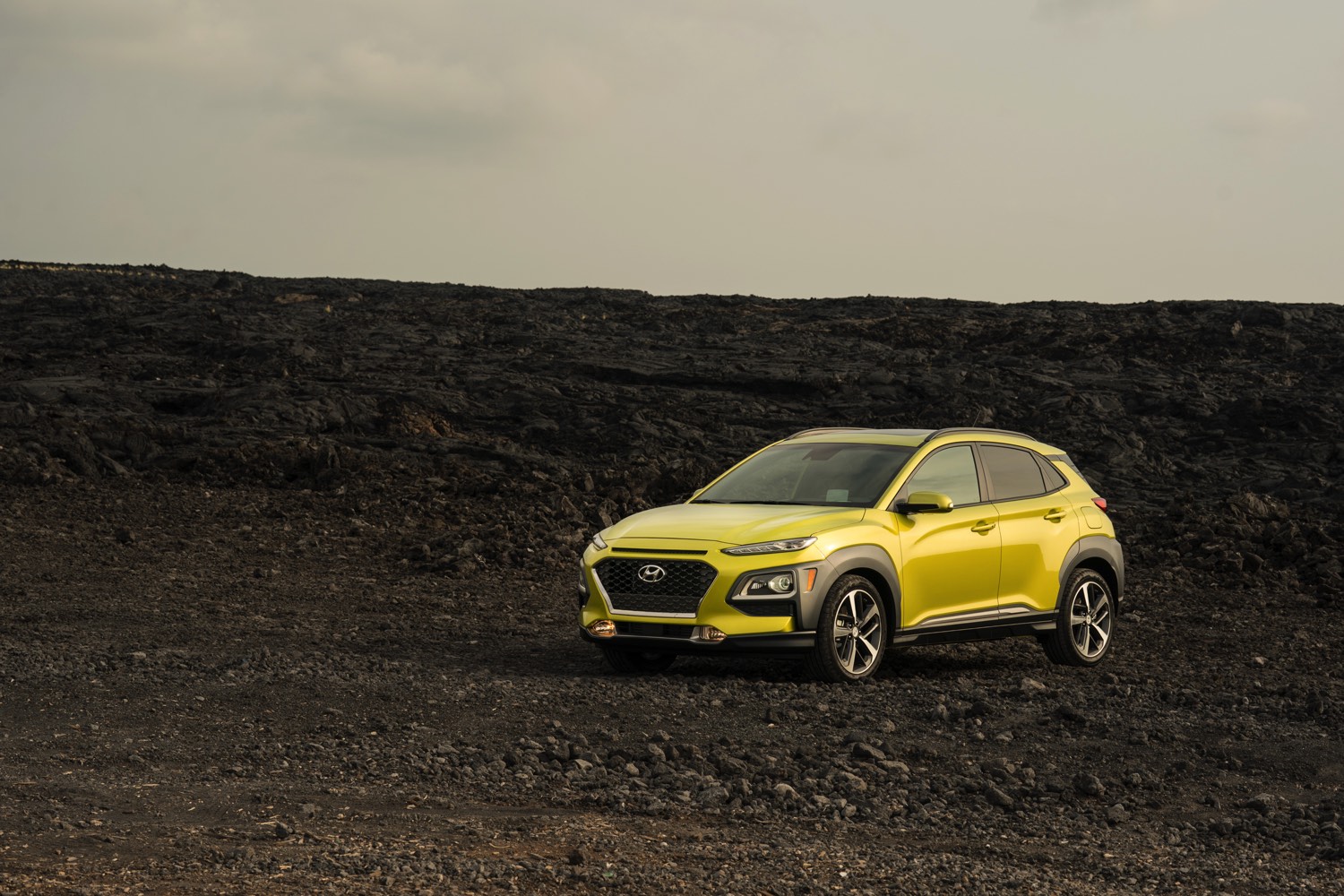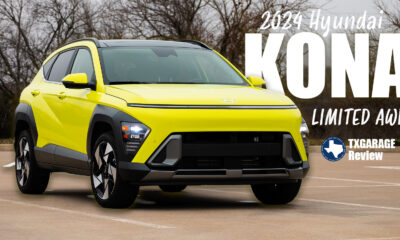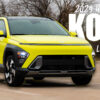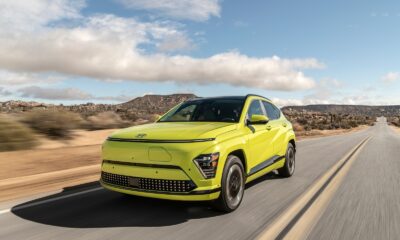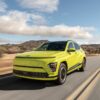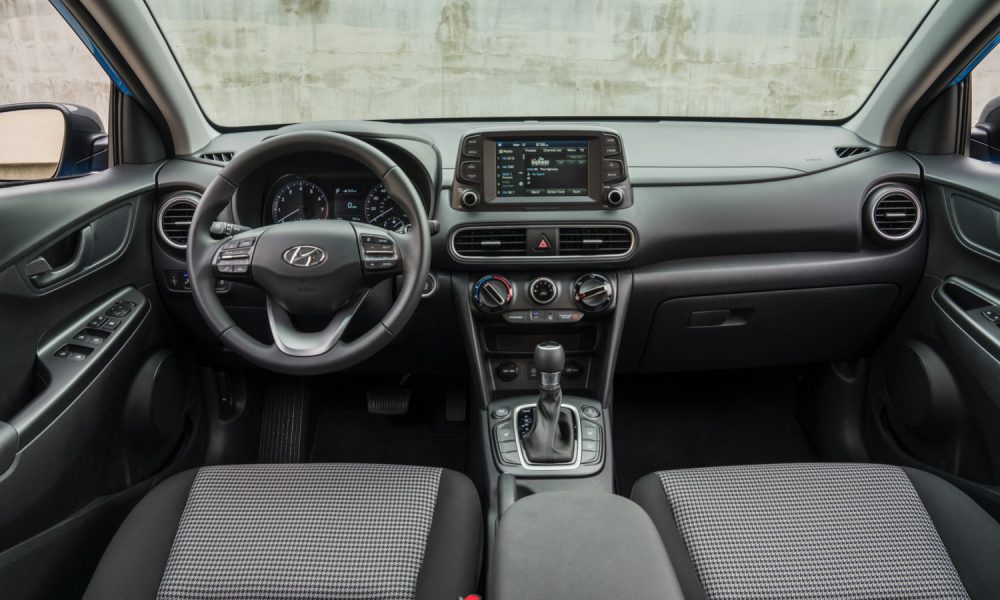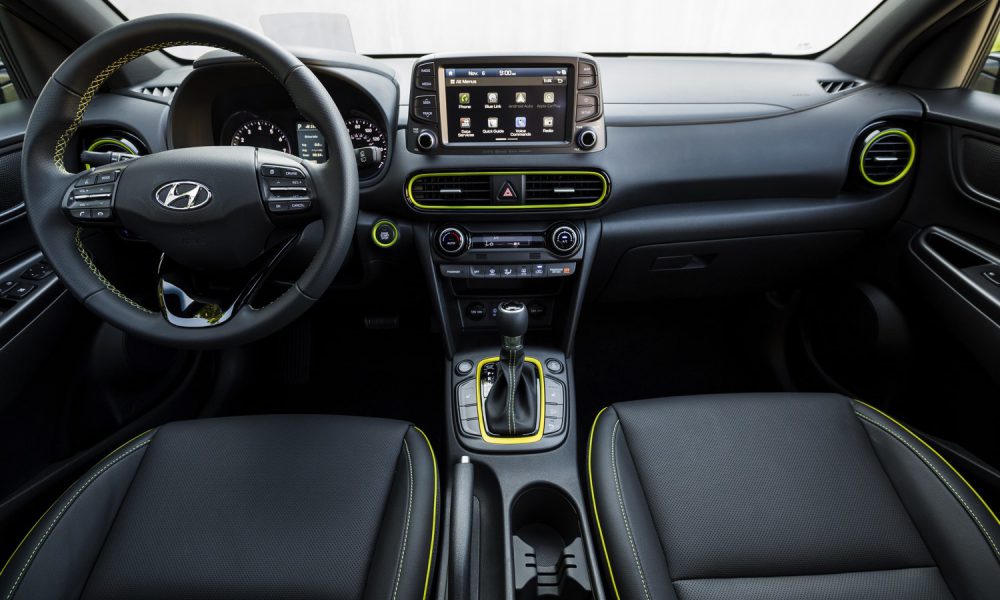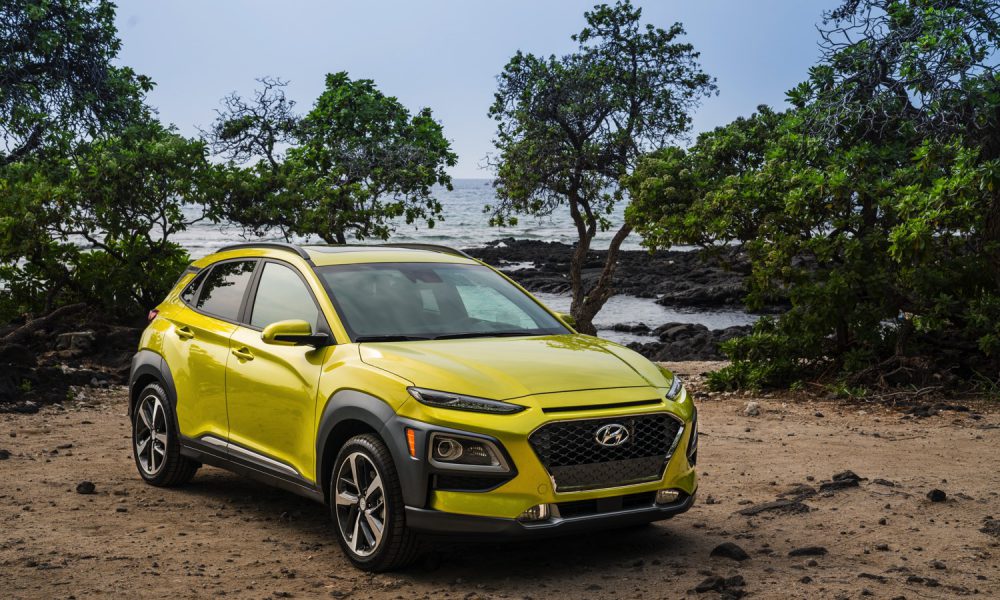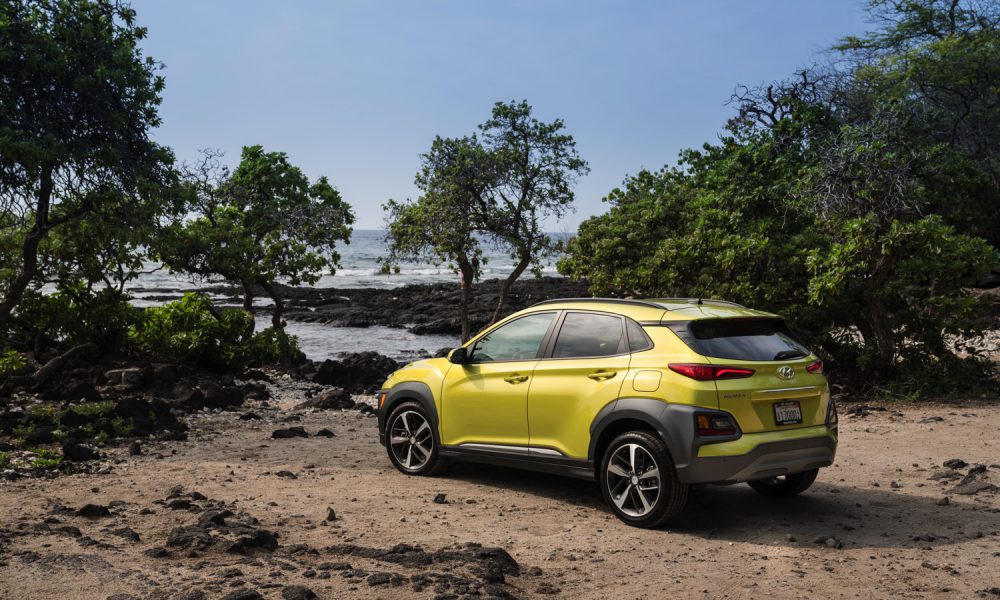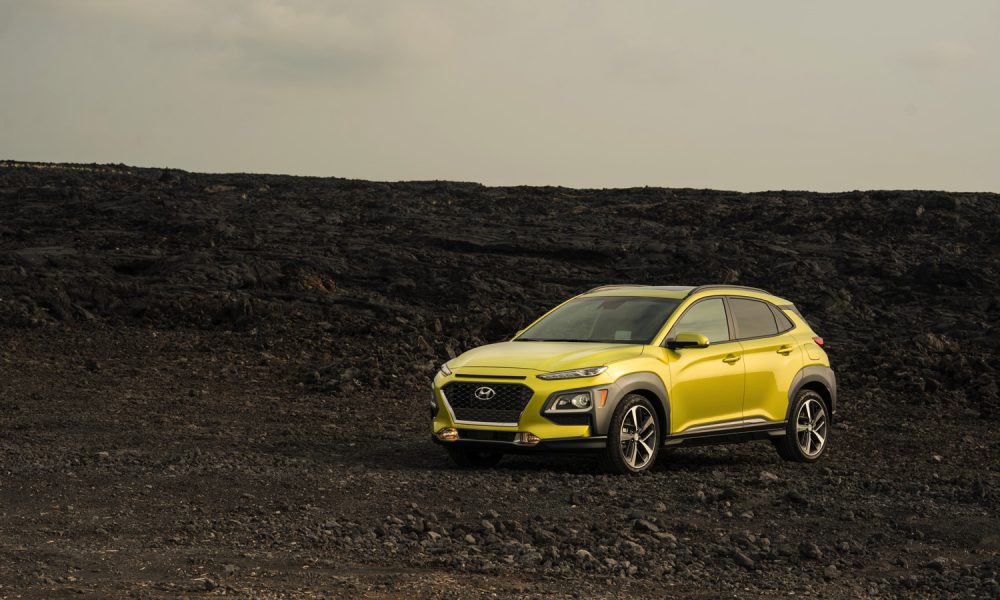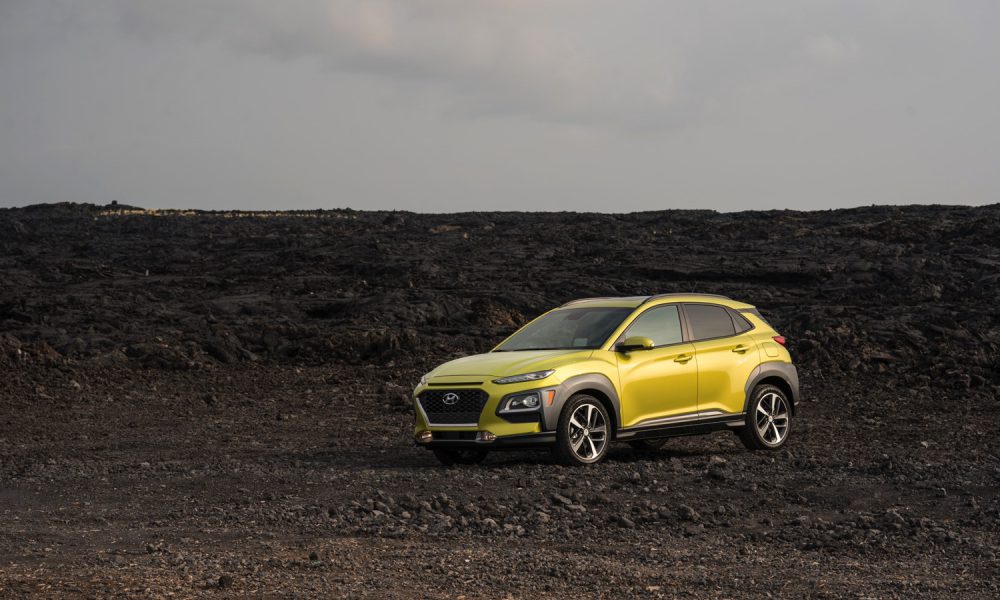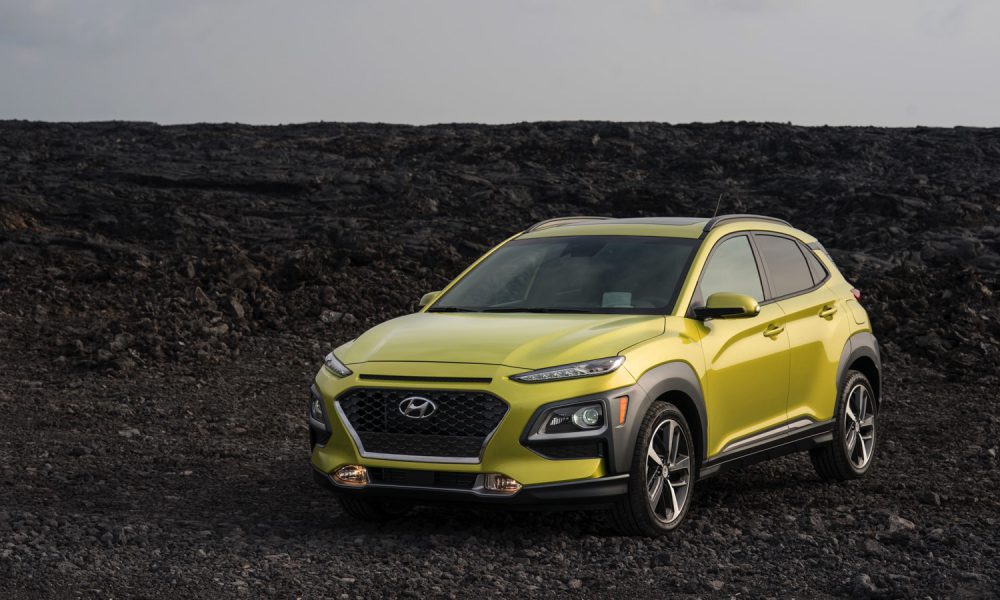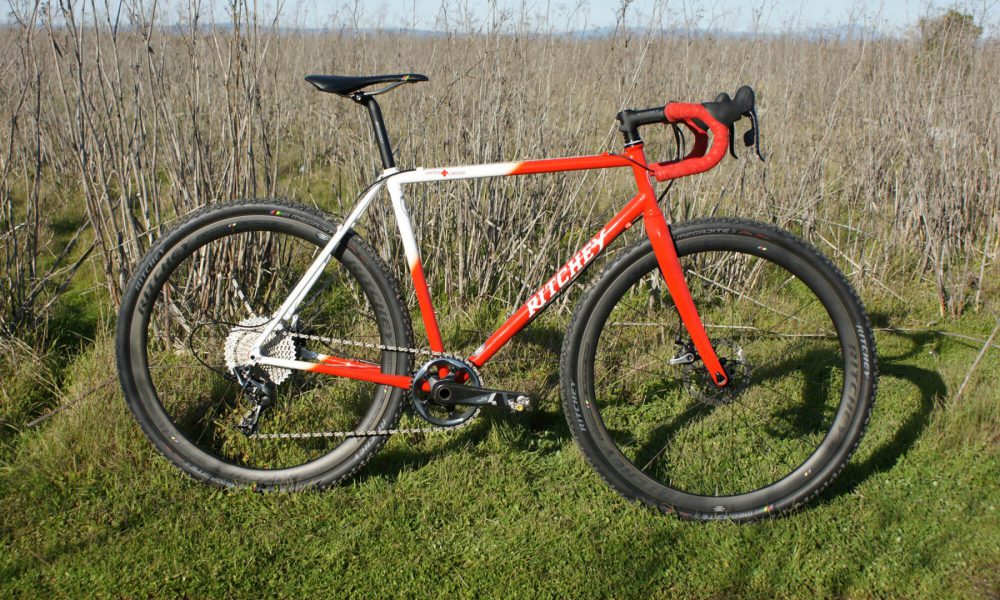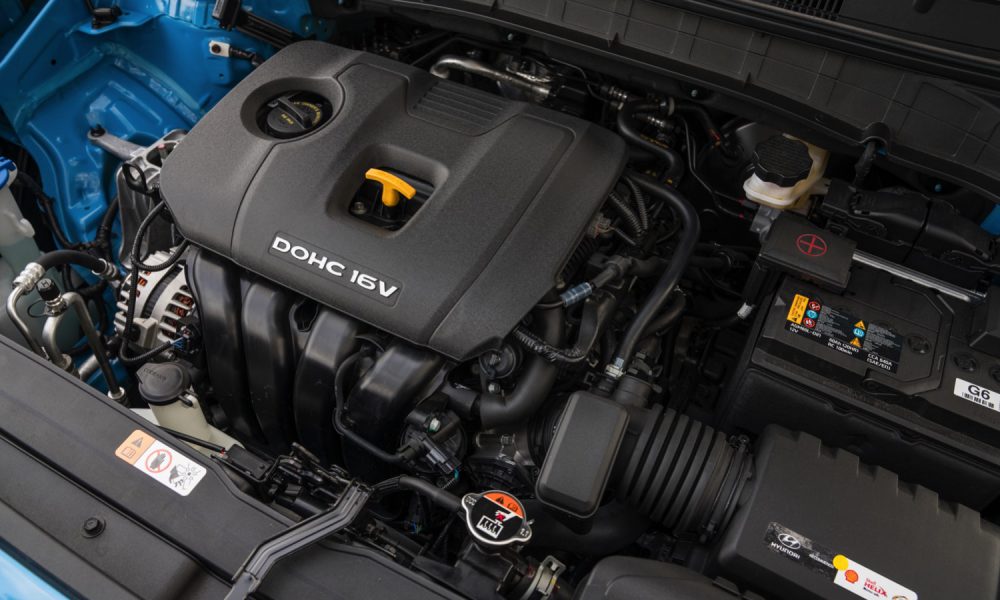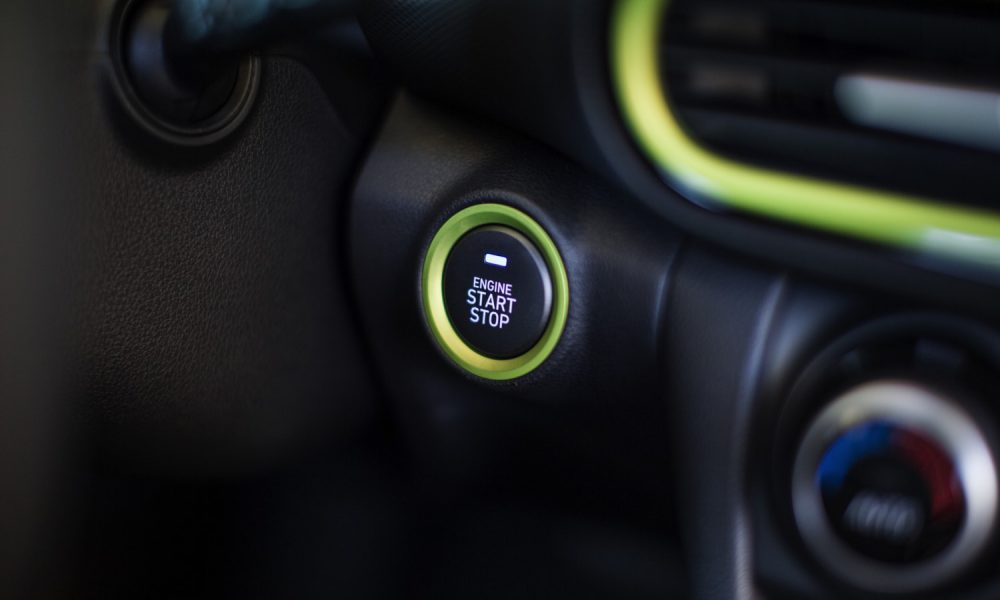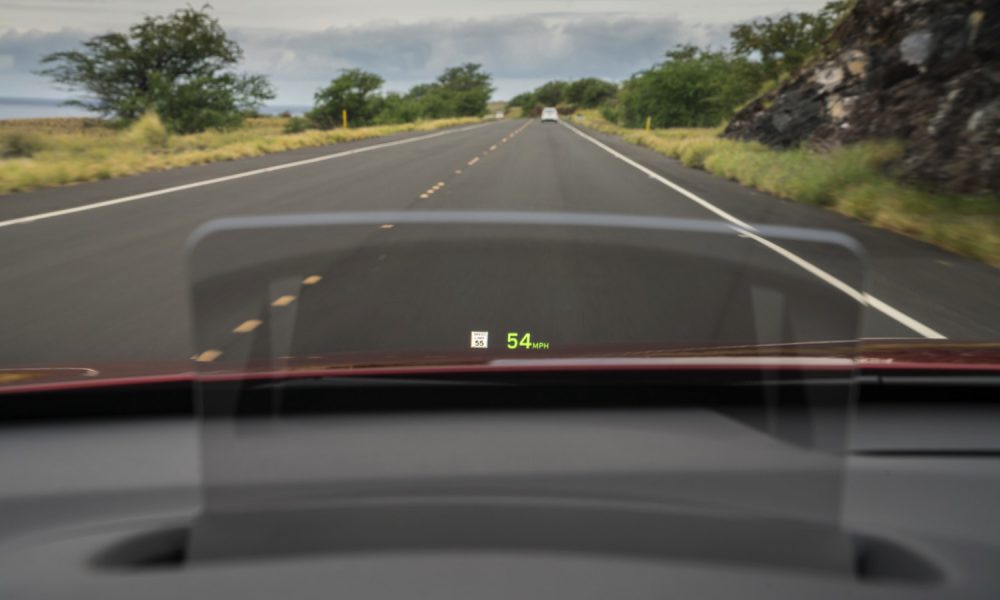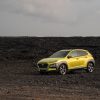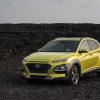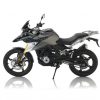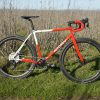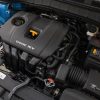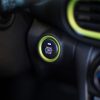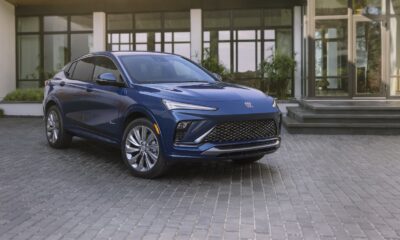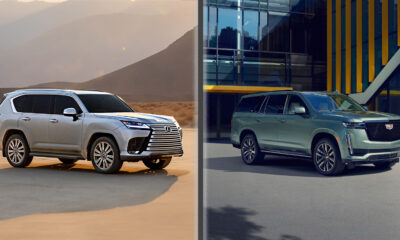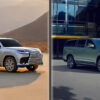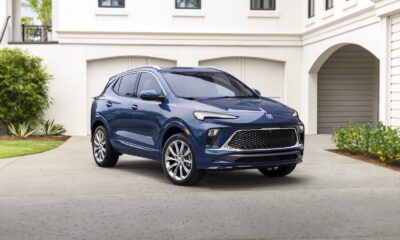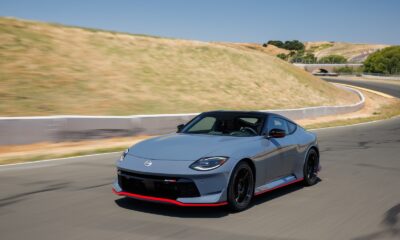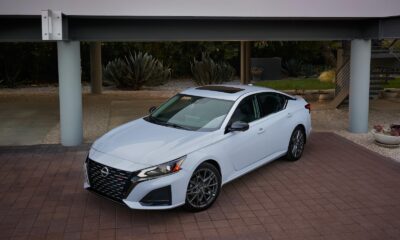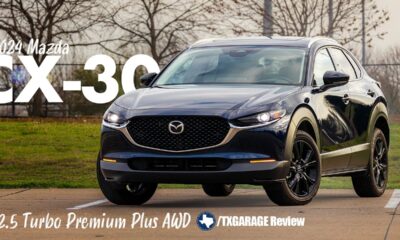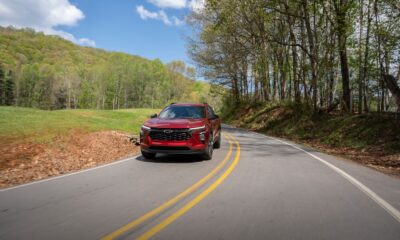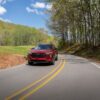Car Reviews
Hyundai’s Kona –
How To Grind Your Gravel
At a time when we, as car buyers, are almost besieged by the industry’s alphanumeric (RS7, anyone?) nomenclature, the folks at Hyundai would seem to have found a sweet spot. To be sure, the company’s U.S. launch didn’t start off that well, as its subcompact ‘Excel’ didn’t really excel, but beginning with its late-‘90s rebound – initiated by the capable Elantra and punctuated, shortly thereafter, by its sporty Tiburon – Hyundai’s penchant for model names that might actually resonate (with somebody) has been consistently good. Case in point: Hyundai’s relatively new Kona.
Joining the subcompact crossover caucus in 2018, I was taken by the Kona’s slightly left-of-center appearance (it’s easy to imagine it with a Beto sticker) and, when equipped with the available 1.6 liter turbocharged four and standard DCT transmission, its genuine spontaneity. While not having the packaging of Honda’s HR-V or sheer panache of the Mazda CX-3, the Kona – again, with its available 1.6 liter turbo providing 175 horses and 195 lb-ft of torque – had spunk. And to channel John Wayne’s Rooster Cogburn, I like spunk.
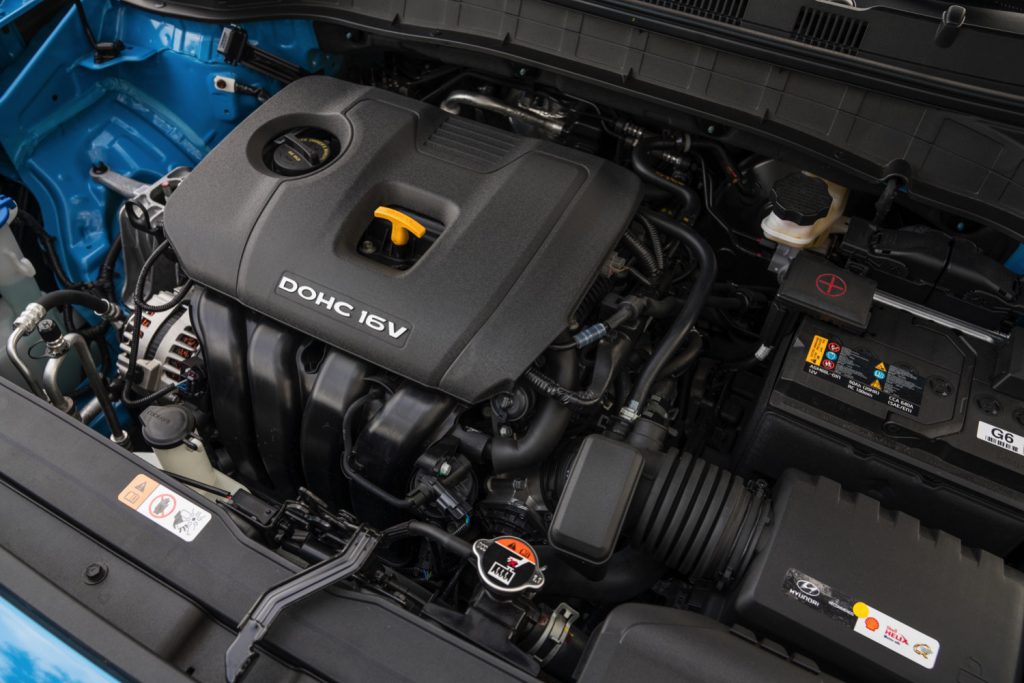
While the powertrain (a 2.0 liter, normally aspirated four is standard – and adequate) remains an aberration in this category, the Kona footprint is about what we’ve come to expect from subcompact crossovers. On a wheelbase of 102 inches and within an overall length of 164 inches, the Kona comfortably accommodates four adults and, with the rear seats up, some 19 cubic feet of cargo. With the rear seats flipped down (passengers should, of course, get out first) you have almost 46 cubic feet for activity-oriented cargo. Notably, this is a subcompact crossover, and for couples or families needing real room, they should bump themselves into the Hyundai Tucson, Honda’s CR-V or Toyota’s RAV4. The Kona is a great grocery getter, but works less well at IKEA.
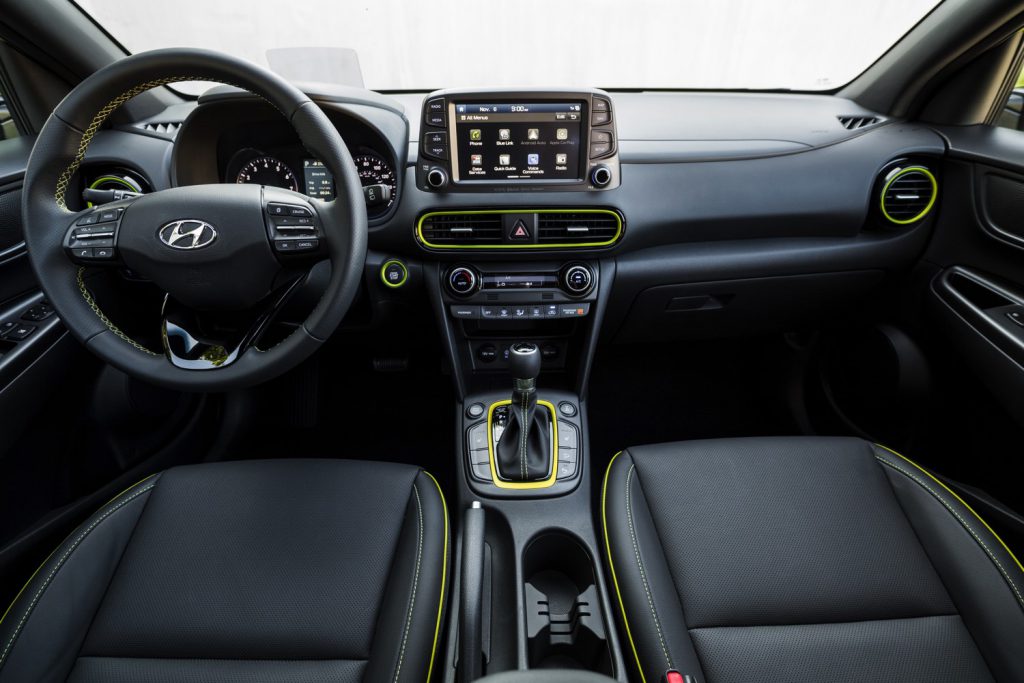
The inside of our top-of-the-line ‘Ultimate’ trim is what you’d hope from a $29K suggested retail. The accessible, supportive seats are covered in a durable, reasonably compliant perforated leather, instrumentation is informative, and Hyundai’s Infotainment continues to offer both entertainment and – surprise! – intuitive operation. In short, they haven’t screwed the audio and ventilation controls up, as so many others in the automotive sphere have.
But with our second visit to the Kona, it’s what’s under your foot that continues to impress. With but 175 horsepower in this state of tune, you won’t be overwhelmed by horsepower, but the immediacy in which this power connects – via the DCT 7-speed – to the ground is impressive. Two-mode driving (Normal and Sport) gives you as much response as you might want, albeit at the expense of fuel efficiency. The Kona, with front-wheel drive and the turbocharged four, has an EPA estimate of 28 City/32 Highway/30 Combined, while others in the category are knocking on 40, and hybrids – such as Kia’s Niro – are exceeding 50. But that’s all forgotten (until the next fill-up) with one tip-in of your right foot.
And it’s the Kona’s cut-and-thrust capability in the urban and suburban environment that started me thinking about gravel. If you’ve paid recent attention to cycling or motorcycles, you know those product spheres are dominated by the ADV (Adventure) specs, both in bikes and motorbikes. It’s as if Ewan McGregor and Charley Boorman (Long Way Round and Long Way Down) were consulting on virtually every two-wheeled product decision made in the last five years. And gravel bikes, regardless of their power source, are pretty compelling, in that their ability to tackle gravel – and other marginal surfaces – successfully bodes well for their year-round capability.
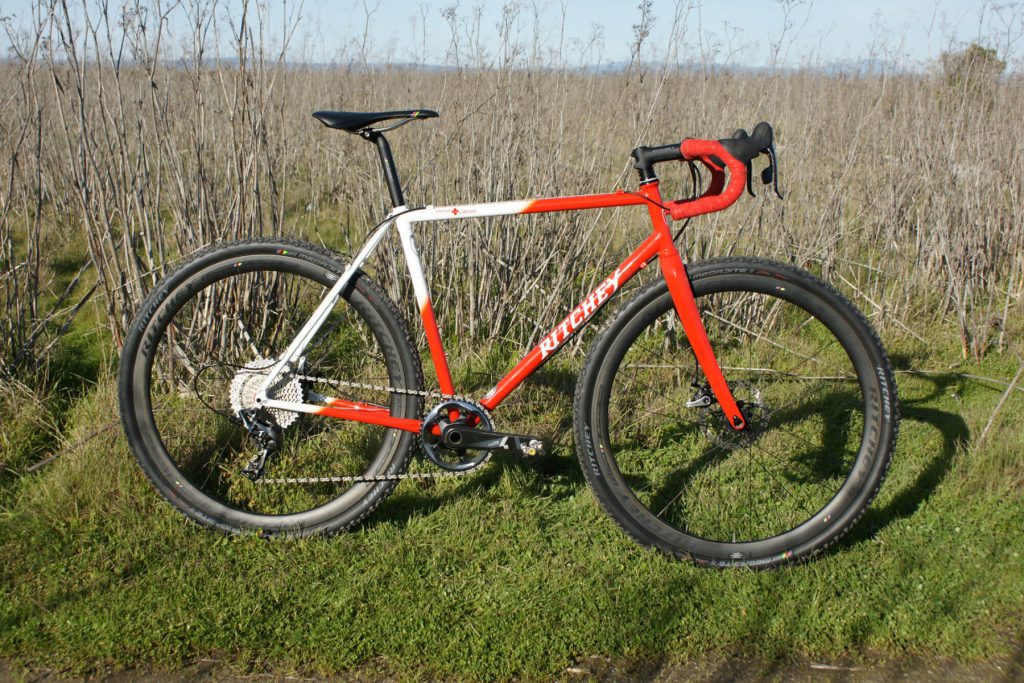
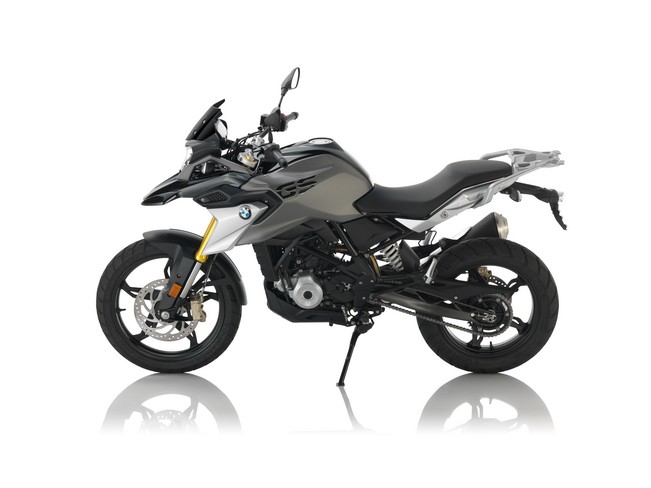
If I were on Hyundai’s product team, I’d offer a mid-level trim with all-wheel drive and the turbocharged four, along with a suspension kit offering the slightest of lifts, bash plates under the expensive stuff, and 16-inch rubber with stiff, rock-absorbing sidewalls. If the team is inclined, an even 200 horsepower wouldn’t hurt, but we’re really talking flexibility here, and most will find the current horsepower adequate. Finally, I’d give it roof rails with real capacity; if the boyfriend gets car sick you can always tie him to the roof…
Keep the price under $30K and, in its rollout, loan one to Ewan and Charley. They’ll know what to do with it.



